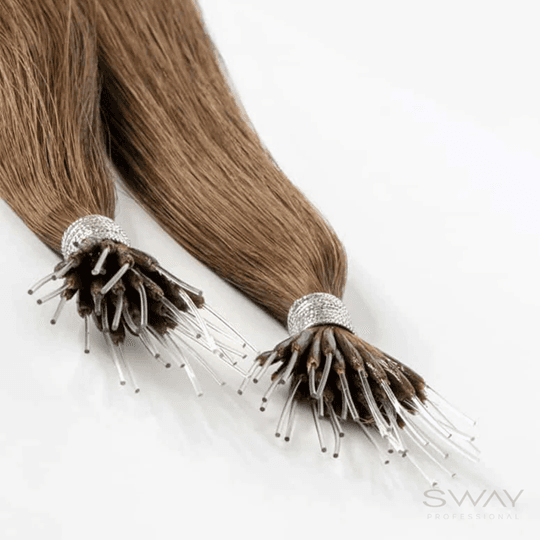Choosing the best hair extension method can be daunting, especially with so many options available. Among these, nano bond hair extensions have gained considerable popularity. But how do they stack up against other hair extension methods? This article will delve into the pros and cons of nano bond hair extensions and compare them to other popular techniques, helping you determine which one is right for you.
Understanding Nano Bond Hair Extensions
Nano bond hair extensions utilise tiny, virtually invisible metal or plastic tips, which are attached to the natural hair with a special bonding method. These extensions are known for their lightweight feel and natural appearance, making them an attractive choice for many individuals seeking to enhance their hair length and volume.
One of the primary advantages of nano bond extensions is their discreet nature. The small size of the bonds ensures that they are almost undetectable, even in fine or thin hair. Moreover, nano bonds tend to cause less damage to the natural hair compared to some other methods, as they do not require heat or glue for attachment.
Comparing with Other Hair Extension Methods
1. Tape-In Hair Extensions
Tape-in extensions are another popular choice, known for their relatively quick and easy application process. Strips of hair are taped to small sections of natural hair, providing a seamless blend. While tape-ins can be reused and repositioned, they typically need to be adjusted every six to eight weeks as the natural hair grows.
However, tape-ins can add more pressure to the natural hair, potentially leading to breakage if not applied correctly. They also require careful maintenance to avoid slippage and tangling, adding an extra layer of responsibility for the wearer.
2. Micro-Ring Hair Extensions
Micro-ring, or micro-bead, extensions are similar to nano bonds in that they use tiny rings to attach the extension to the natural hair. The difference lies in the size of the beads; micro-rings are larger and more noticeable compared to nano bonds.
Micro-ring extensions are a good choice for individuals with thicker hair who may struggle to conceal other types of extensions. However, they can be a less suitable option for those with fine or thin hair, where the larger beads could be more visible and potentially damaging.
3. Weave Hair Extensions
Weave extensions involve braiding the natural hair tightly and sewing in wefts of hair onto the braids. This method is particularly popular among individuals with coarse or curly hair types who benefit from the added durability and meticulous blending this technique offers.
Nevertheless, the tight braiding required for weaves can be quite stressful on the scalp and natural hair. It can lead to tension and discomfort if worn for extended periods or if not installed and maintained correctly.
4. Clip-In Hair Extensions
Clip-in extensions are a versatile and temporary option, designed for easy installation and removal. Clips are attached to wefts of hair sections, allowing wearers to add or remove length and volume as desired.
While convenient, clip-ins are not a long-term solution and are best used for special occasions or temporary changes. Continuous use can stress the natural hair at the clip points and necessitate careful placement to avoid visible clips.
In summary, choosing the right hair extension method depends on your specific needs, hair type, and lifestyle. Nano bond hair extensions offer a discreet and lightweight option, ideal for those seeking a natural look with minimal damage. While other methods like tape-ins, micro-rings, weaves, and clip-ins each have their own benefits, they may not be as suitable for individuals with fine or thin hair. Consider the pros and cons of each technique to determine which one aligns best with your hair goals and maintenance preferences.






